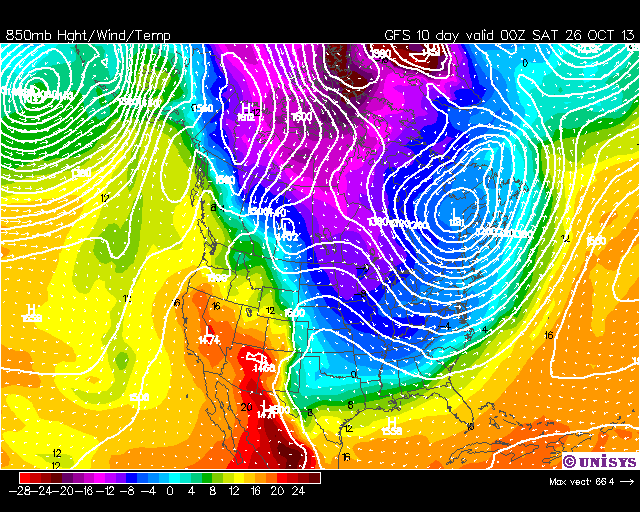
I’ve been watching the 10-day GFS forecast for the U.S., and each run is reinforcing the previous one, with a major cold air outbreak for most of the U.S. late next week:

I’m reminded of when I started the graduate program in meteorology at UW-Madison in the fall of 1978. We were getting an unusual string of cold fronts which all the professors were claiming could not last. Eventually, warmer Pacific air would come in from the west…it always does.
Except during winter ’78-’79…it didn’t. The cold air just kept coming.
I’m not making a winter forecast here…just reminiscing. But I will say that I’ve been watching the model forecasts nearly every day for decades (since I’m co-developer of WeatherStreet.com, and still a weather weenie at heart), and for many years the model forecast tendency has been to over-forecast these cold air outbreaks.
The model would predict a cold front coming through our neck of the woods (N. Alabama) 5-7 days in advance…but the front would almost never make it, or it would not plunge as far south (or be as cold) as originally forecast.
But this model error tendency seems to have changed in the last couple years, with that cold air not only making it, but reaching the Gulf coast and beyond. This has been a record cold summer in Alabama, and we had cool fronts pass through regularly all summer long. I don’t recall that ever happening in the 30 years we have lived here. The lawn stayed spring-green all summer, when usually we have to work to keep it alive.
Maybe my friend Joe Bastardi will chime in and say whether he has seen a similar change in the model error in recent years.
At least we can be thankful that when the cold air does arrive, it will be slightly warmer than it would have been without global warming. Ha-ha.

 Home/Blog
Home/Blog



